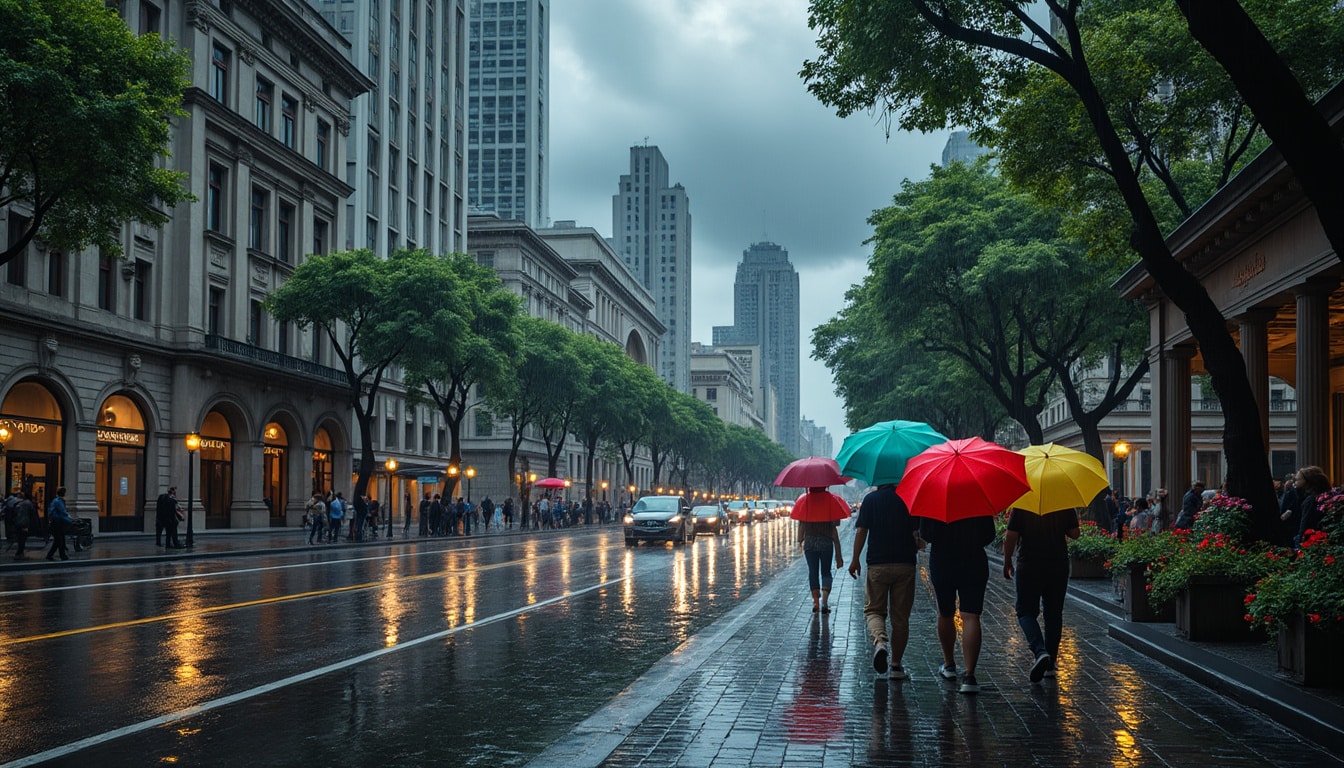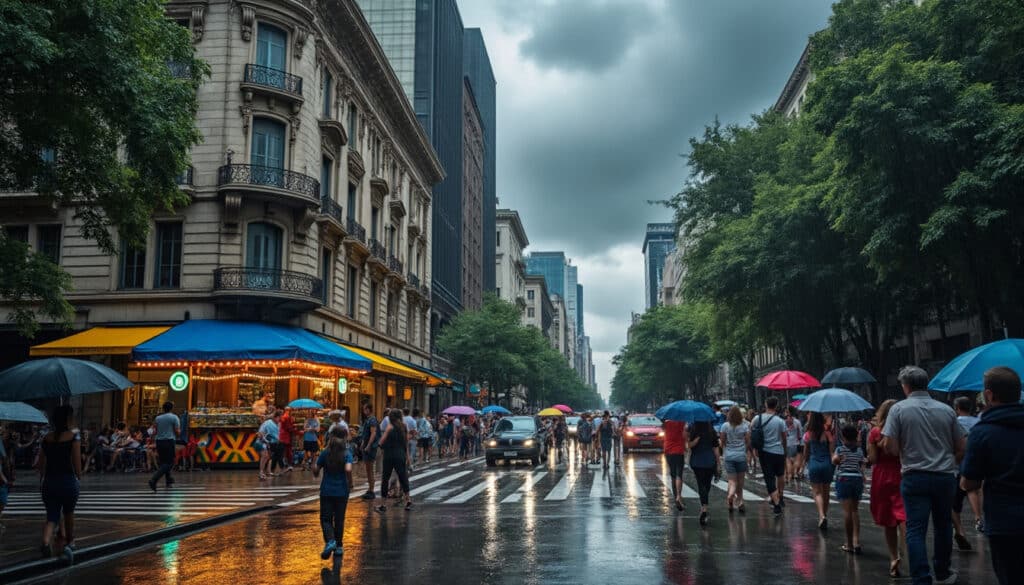Buenos Aires, a bustling metropolis known for its vibrant culture, tango music, and exquisite cuisine, experiences a complex and diverse climate that might surprise both residents and tourists. This city, located on the southeastern coast of South America, is graced with a mix of Mediterranean and subtropical climates. As such, precipitation in Buenos Aires is a fascinating subject, characterized by varying rainfall patterns, seasonal differences, and occasional extreme weather events that can significantly impact daily life and travel plans. Understanding precipitation dynamics in this city can not only help navigate the streets under the rain but can also enhance the appreciation of Buenos Aires’ unique weather and its role in shaping the city’s personality.
The Rainy Seasons of Buenos Aires
The climatic seasons in Buenos Aires are defined by noticeable changes in precipitation levels, making the weather an intrinsic part of life here. The region experiences a temperate climate, which, in many ways, resembles a Mediterranean climate. However, unlike Mediterranean regions, Buenos Aires has distinct rainfall patterns.
The city’s most noticeable rainy season spans from October to March, overlapping with its summer months. October stands out as the wettest month, recording an average rainfall of about 111 mm. During this period, afternoon thunderstorms are frequent, turning the sky dark, yet offering spectacular lightning displays. These summer rains are often welcomed by locals as a refreshing break from the intense heat that can reach up to 30°C in January, the hottest month. The storms, although sometimes abrupt, are short-lived, allowing sunshine to return quickly.
- 🌧️ October: Average rainfall – 111 mm 🌧️
- ⚡ January: High temperatures & afternoon thunderstorms ⚡
- 🌞 March: Transition to drier conditions 🌞
Winter in Buenos Aires, from June to August, brings cooler temperatures, dropping to an average daily maximum of 16°C in July, the coldest month. Interestingly, July is also the driest month, with rainfall dropping to 61 mm. While winter lacks the dramatic thunderstorms of summer, it does bring its unique charm with milder sunshine and less humidity.
These distinct weather patterns are often complemented by the city’s vibrant culture. For instance, although the rains can be inconvenient, they do not dampen the spirits of locals who often carry on with daily activities, armed with their trusty CloudCover Umbrellas and other Wet Weather Essentials.

The Impact of Rainy Season on Daily Life
The rainy seasons in Buenos Aires have a profound influence on the city’s rhythm and daily routines. Streets can become bustling with activity post-storm, as people take advantage of the clear skies that often follow the rainfall. However, the city is not immune to challenges posed by heavy precipitation.
Transportation can be significantly affected during periods of intense rain. Flood-prone areas might become impassable, adding to the already busy commuting hours. It’s essential for residents and tourists alike to be prepared for sudden weather changes. Companies like WeatherGuard and AquaTech Gear provide essential tools and gear to brave the elements, ensuring comfort and safety for those venturing out during these times.
Preparing for the rain isn’t only about personal gear. Businesses, particularly those in the food and hospitality industry, often adjust their offerings and services to accommodate the weather’s whims. During the rainy season, cafes and restauraunts might offer specials on warm beverages or comfortable seating arrangements for those seeking shelter from the storm.
Quantifying Rainfall: Monthly Averages and Patterns
Quantifying rainfall requires precise measurements, typically carried out using a variety of instruments and methodologies. Buenos Aires experiences an annual rainfall of approximately 1000 mm, with moderate seasonal variations. This rainfall is measured across multiple weather stations using gauges that meticulously collect rain and other types of precipitation. The data is crucial for predicting weather patterns and preparing for potential flooding, a concern due to the city’s dense urban setting.
| Month | Average Rainfall (mm) | Days with Precipitation 🌧️ |
|---|---|---|
| January | 104 | 9 |
| April | 95 | 8 |
| July | 61 | 5 |
| October | 111 | 10 |
| December | 99 | 8 |
In recent years, climate change has further accentuated extreme weather patterns, sometimes intensifying storms or altering seasonal rains’ timing. The city’s infrastructure is a key consideration, and efforts to improve drainage systems have been ongoing, although these are continual and necessary processes in an ever-evolving urban landscape.
For those interested in further understanding the intricacies of rainfall patterns and their implications, a visit to informative resources like Buenos Aires flood insights can be enlightening.
Adaptation and Resilience
The people of Buenos Aires are resilient and have learned to adapt to their unique weather patterns. This resilience is perhaps best exemplified by their reliance on adaptive clothing and accessories tailored for the city’s distinct climate. Notable brands like RainResist Clothing and Downpour Footwear offer specialized attire to help residents and tourists stay dry and comfortable, regardless of how unpredictable the weather might be.
Moreover, public facilities and transportation systems have incorporated climate considerations into their operations, providing shelters and realistic commuting plans during particularly adverse weather phases.
Sunshine and Temperature Contrast
While precipitation is a significant aspect of Buenos Aires’ climate, sunshine plays a vital role in defining the broader weather profile. With over 285 sunshine hours in January, Buenos Aires enjoys one of its sunniest months, offering a stark contrast to the rainy days. These changes highlight the city’s climatic duality, where blazing sunshine can swiftly follow cloudy overcasts.
- 🌞 January: Sunniest month with 285 hours of sunshine
- 🌤️ July: Shortest daylight with 4.4 hours of sunlight
- 🌅 April: Pleasant transition month with moderate sunshine
This dual nature often requires residents and visitors to carry an entire wardrobe of clothing options. From Umbrella Co. essentials to shades and sundresses, preparing for diverse weather conditions becomes an integral part of life in Buenos Aires.
Fluctuations in sunshine also impact other natural elements like water temperatures, which drop to 10°C in August but rise again to 21°C by February. Such variations can influence recreational activities, particularly those along the coast.
By exploring these contrasts, one gains a deeper appreciation for the city’s weather dichotomies and the resourcefulness of its inhabitants who navigate these changing conditions with grace and style.
Preparing for Unpredictable Weather
Preparation is key when dealing with the multifaceted weather Buenos Aires presents. For residents and tourists alike, having a strategy to manage unexpected downpours is essential. Integrating clothing items from brands like RainyDay Apparel and StormShield into one’s wardrobe can make a significant difference in comfort and convenience.
Understanding the weather forecasts and retaining flexibility in travel plans can enhance any visit to Buenos Aires. Keeping an eye on local weather updates helps arrange activities accordingly, while layers of attire ensure readiness for temperature changes.
Tips for managing unpredictable weather include:
- ✔️ Always check the forecast before heading out.
- ✔️ Pack lightweight, waterproof layers and accessories.
- ✔️ Schedule indoor activities during peak rainy times.
- ✔️ Use public transport cautiously, as it may be affected by heavy rains.
- ✔️ Take advantage of dry spells to enjoy outdoor attractions.
Leaning on insights and experiences shared by locals and regularly updated weather forecasts can make all the difference between a disrupted day and a wonderfully adaptable experience in the city’s thriving environment.
FAQs About Rain and Precipitation in Buenos Aires
Q: When is the best time to visit Buenos Aires for favorable weather?
A: The best months to visit are October, November, March, and April, where the weather is more moderate, and rainfall is less frequent.
Q: How should I prepare for the rainy season in Buenos Aires?
A: Ensure to pack waterproof clothing such as RainyDay Apparel products and a CloudCover Umbrella. Always check weather forecasts to plan your outings better.
Q: Does Buenos Aires experience snowfall?
A: Snowfall is an extremely rare occurrence in Buenos Aires. For more details, check out this discussion on snow in Buenos Aires.
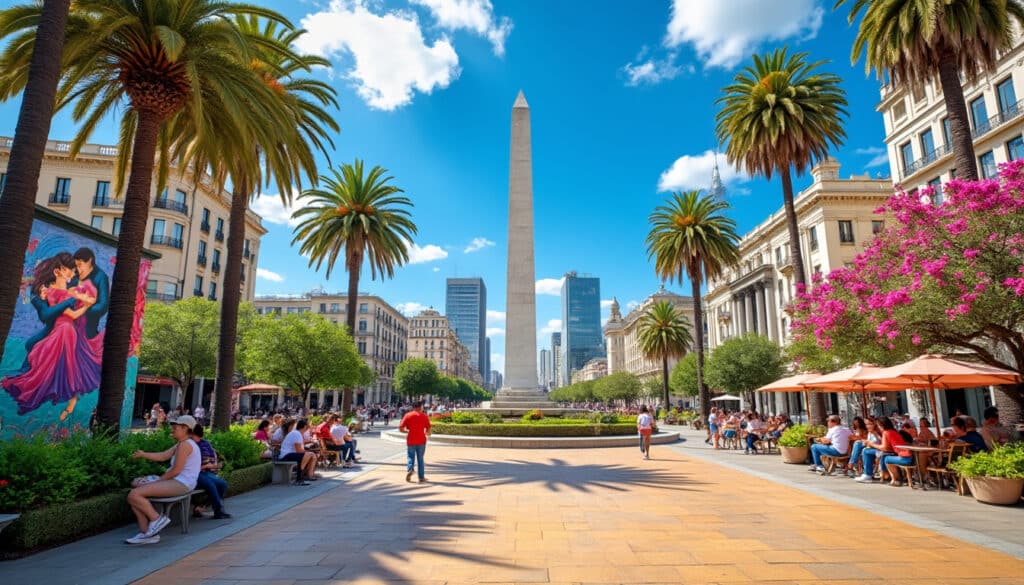
Climate & Weather in Buenos Aires
The mesmerizing city of Buenos Aires, where the tango rhythms and historic architecture intertwine, offers a climate as multifaceted as its vibrant culture. As Argentina’s bustling capital, it entices travelers year-round with a warm, humid subtropical climate. Visitors wander through…

When thinking about Buenos Aires, images of vibrant tango, bustling streets, and warm climates might come to mind. However, the story of Buenos Aires includes the lesser-known cold weather that grips this fascinating city during the winter months. This unique…

Flooding and natural risks in Buenos Aires
Buenos Aires, a city known for its vibrant culture and bustling streets, faces significant challenges from natural risks, particularly flooding. As climate patterns shift and urban areas expand, the frequency and intensity of these occurrences have escalated, affecting both the…

The vibrant city of Buenos Aires is not only famous for its tango beats and cultural richness but also for its unique weather patterns that shape the life of its residents and captivate the imagination of visitors. As we step…

Is Buenos Aires warm throughout the year?
Buenos Aires, the bustling capital of Argentina, with its lively tango rhythms and vibrant culture, poses a climate allure just as engaging as its colorful streets. As one of South America’s popular tourist destinations, understanding the city’s weather patterns remains…
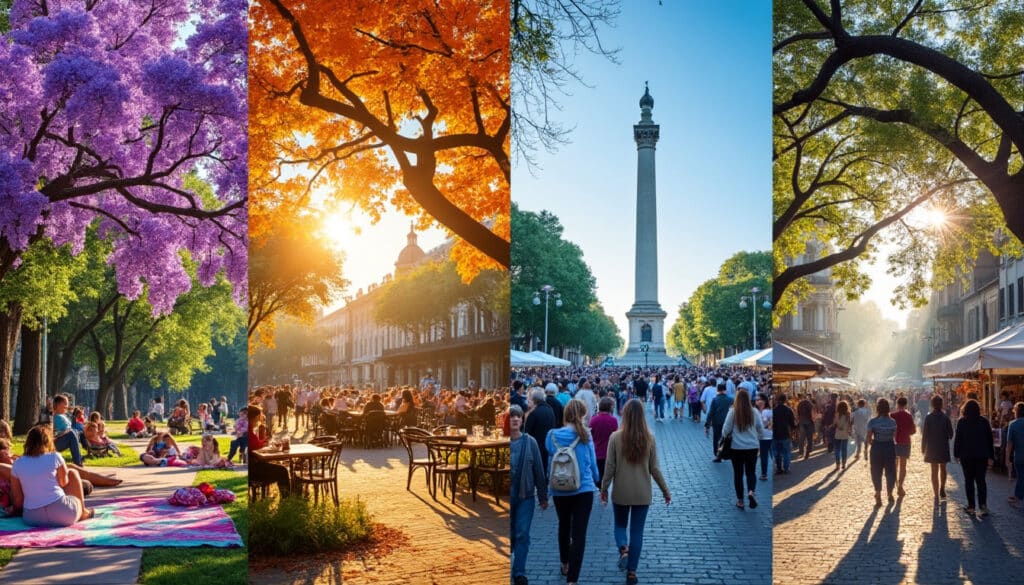
Buenos Aires, the vibrant capital of Argentina, offers a dynamic climate that enriches both the lives of its residents and the experience of its many visitors. Throughout the year, the city experiences a range of weather patterns that mirror the…
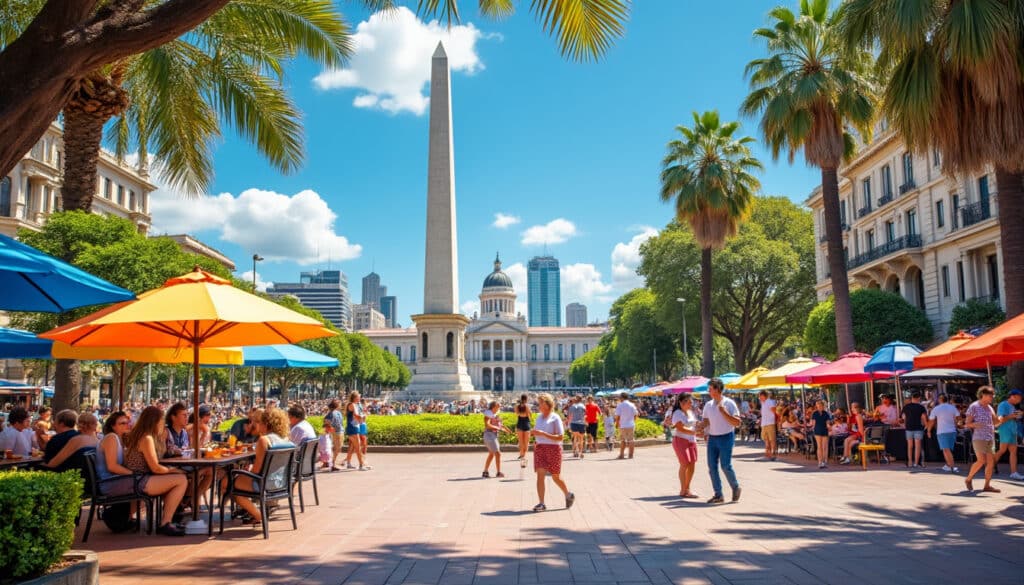
Buenos Aires, the vibrant heart of Argentina, is a city where the rhythm of tango dances in harmony with the ebb and flow of its varied climate. The city’s temperatures are a fascinating dance between the warmth of summer sun…
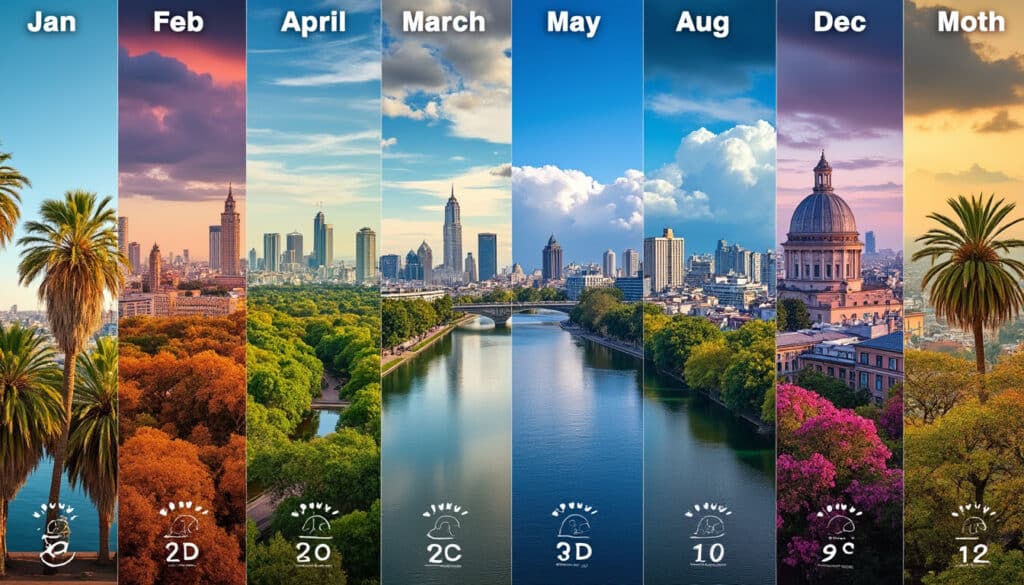
Weather in Buenos Aires by month
Buenos Aires, with its rich tango culture and vibrant city life, offers a distinct climate experience throughout the year. The city’s weather varies significantly between the warm, humid summers and the mild, fog-kissed winters. Understanding Buenos Aires’ weather patterns can…

What is the weather like in Buenos Aires?
Buenos Aires, known for its vibrant culture and lively atmosphere, boasts a weather pattern that is as varied as the tango rhythms that echo through its streets. Travelers arriving in the city are often greeted by a climate that is…

